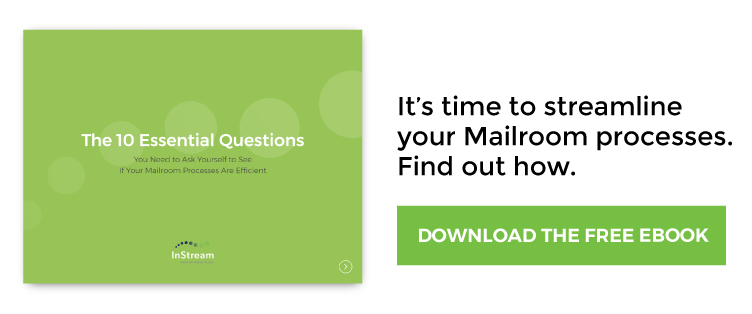Optimizing Electrical Co-Ops With Automation
InStream helps find new ways to automate back-office and customer-facing processes
Electrical co-ops are completely and utterly taken for granted. Your customers shrug when the lights go on, but threaten to riot when an outage lasts longer than 5 minutes. Not many organizations can include ‘Upholding the 21st Century lifestyle 24/7’ in their mission statement, but you can. Minimizing system downtime is Job #1.
Like any organization serving the general public, Job #2 is customer service. In a co-op’s case, customer service includes fielding complaints, answering billing questions, sending outage notifications and general communication. As with any business, co-op leadership is always looking to squeeze more efficiency into back-office functions, like accounts payable, human resources, fleet management, and payment processing.
Ripe for Automation
The fact is, many – if not most – electrical co-ops and municipalities are using 1970’s-era systems and hardware elements (SCADA) to control processes, gather data and interact with the power grid. As reliable as these legacy systems may have been over the past 40+ years, security and uptime concerns are driving the inevitable push toward modernization and automation.
Generally, the goal of automation is to reduce cycle-times, whether that’s the time between a customer complaint and its resolution or the time it takes to onboard a new employee or process a customer payment.
Instream’s Consultative Approach
InStream is very familiar with integrating previously siloed legacy systems, which is the primary use-case for process automation and a significant need among electrical co-ops using aging technologies. At the beginning of each client engagement, we consult first with executive-level stakeholders to understand your objectives, talk about ROI and identify where we can drive a more efficient workflow and shorten the revenue cycle. Following that, we’ll talk with your knowledge workers to understand processes and challenges from their perspective to uncover additional areas we can optimize and automate.
InStream helps electrical co-op leadership navigate two questions:
- How do we automate the business functions we know can be automated?
- How do we discover new areas for automation?
Robotic Process Automation (RPA) can play a central role in streamlining virtually every back-office and customer-facing process across the organization. It can act as middleware, integrating legacy systems without requiring the co-op to re-architect their entire system infrastructure. For instance, RPA sitting between the electrical grid and a customer database could automatically send email or text notifications about a power outage or power restoration in the area. Likewise, RPA can ease a customer’s service transfer from an old address to a new house, or address billing questions instantly.
Back-Office Operations and Processes are primarily a document management challenge, ripe for automation. Of course, ‘back-office’ is a general term involving numerous functions. Accounts Payable, for instance, is all about invoice processing. Electrical co-ops have to track and pay invoices relating to dozens of general business activities, from mechanics working on trucks to HVAC techs working on a building unit. Additionally, within HR, a distributed workforce and frequent turnover may present unique compliance and regulatory challenges related to onboarding and offboarding processes.
Fleet Management is also a critical back-office function. When a vehicle needs an oil change or headlight repaired, InStream’s process will provide awareness based on hours logged or miles traveled to initiate maintenance. Repair request submissions utilizing eForms and workflow solutions can also kick off this process. Preventive maintenance activities are logic-based and best-practices-based, making it low-hanging fruit for automation.
Another aspect of fleet management is vehicle allocation. Optimizing your fleet requires you to understand which vehicles are available, where they’re needed and where they are now. Through automation, you can flag a threshold for the number of service requests you receive from a given zip code, for instance. Once that threshold is met, your system can automatically alert and dispatch repair trucks via text.
Payment Processing encompasses your wholesale and retail lockbox and mailroom. Perhaps correspondence, whether it be an address change notification or a written complaint letter, is coming into your mailroom daily. Maybe a facility manager sends one payment for all of its building’s tenants and you’re required to credit each tenant individually for their portion, or an individual sends a check for her monthly electric bill.
InStream can process any of those scenarios and more on your behalf. We’ll provide you with an electronic file that allows you to either review the reconciliation report of all payments processed in a given period or reconcile it yourself. In that case, we’d scan all the checks and remittance coupons, the checks and the coupons, put them into our system and grant you electronic access.
Our Virtual Mailroom improves collaboration by allowing any designated employee to instantly access mail from any digital device. Additionally, manually processing and handling mail in physical mailrooms is expensive from a staffing perspective. Virtual Mailrooms not only remove that expense, but they also improve security and eliminate human error. Rather than processing mail on-site, InStream converts your mail in our secure facilities.
To learn more about InStream and our solutions and services for Electrical Co-Ops, please contact us at info@instreamllc.com.



